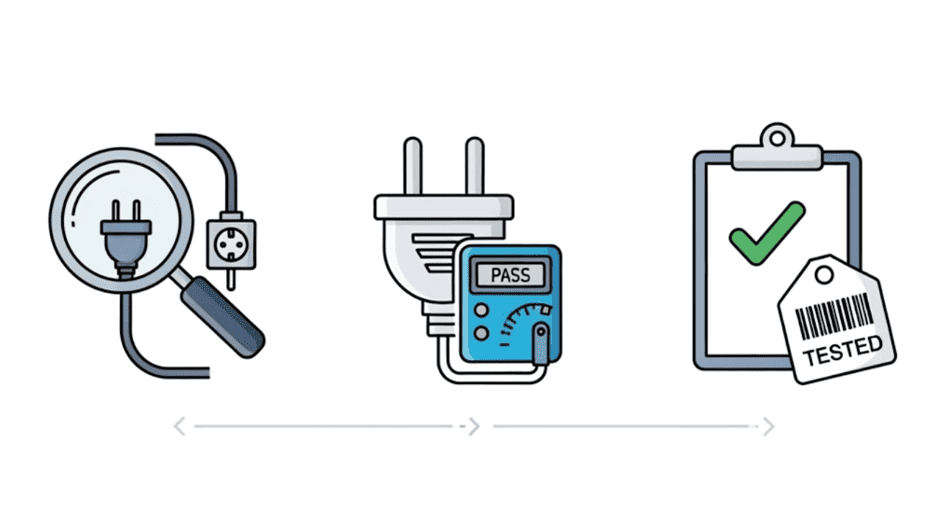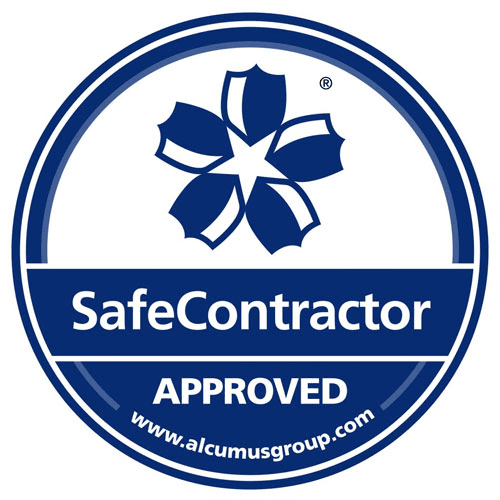PAT Testing Demystified: Ensuring Portable Appliance Safety in Your Workplace
The modern workplace is powered by a vast array of portable electrical appliances – from laptops and printers to kettles and power tools, these devices are essential for day-to-day operations.
However, with this convenience comes a critical responsibility: ensuring these appliances are safe for use. This is where Portable Appliance Testing, or PAT Testing, comes in.
For many Facilities Managers and business owners, PAT testing can feel like another bureaucratic hurdle. Yet, it’s a fundamental part of workplace safety and a non-negotiable legal obligation.
At FPM Facility Services, we believe that understanding your compliance responsibilities is the first step towards a safer and more efficient workplace. With our 25 years of experience, we’ve helped countless businesses demystify their electrical safety obligations, providing comprehensive testing and maintenance services that keep their teams safe and their operations compliant. This article aims to break down the essentials of PAT testing, explaining what it is, why it’s so important, and how our expert team can help you manage it effectively.
What Exactly Is PAT Testing?

PAT testing is the process of a visual inspection and electrical test of portable electrical equipment to ensure it is safe to use.
While the name suggests “portable,” this can include a wide range of appliances, from those that are easily moved to those that are heavy or semi-permanent, such as a desktop computer or a fridge freezer.
The goal of the test is to identify any potential faults, damage, or wear and tear that could lead to an electrical hazard, such as an electric shock or a fire. The process typically involves:
- A Thorough Visual Inspection: Our engineers first check for any signs of damage to the appliance, its cable, or its plug. This is often the most critical part of the test, as many faults are visible.
- A Series of Electrical Tests: Using specialised PAT testing equipment, we carry out a range of electrical safety tests.
- Labelling: Once an appliance has passed the test, it is labelled with a pass or fail sticker, along with the date of the test and the date for the next inspection.
- Record-Keeping: A detailed record of all tests and results is created, providing a clear audit trail for compliance.
The Legal and Safety Imperatives
In the UK, several key pieces of legislation mandate the need for electrical safety in the workplace. While none of these laws explicitly mention “PAT testing,” they do place a clear legal duty on employers and landlords to ensure all electrical equipment is maintained in a safe condition.
- The Electricity at Work Regulations 1989: This is the cornerstone of electrical safety law. It requires that all electrical systems and equipment in the workplace be maintained to prevent danger. This is a broad requirement, and PAT testing is a widely accepted and systematic way to demonstrate compliance.
- The Health and Safety at Work etc. Act 1974: This act places a general duty of care on employers to ensure, so far as is reasonably practicable, the health, safety, and welfare of their employees. Unsafe electrical appliances would be a clear breach of this duty.
- The Provision and Use of Work Equipment Regulations (PUWER) 1998: These regulations require that all work equipment is suitable for its intended use and maintained in a safe condition.
Beyond legal compliance, the safety benefits are paramount. Unsafe appliances can cause electric shocks, which may be fatal, or start electrical fires that can lead to catastrophic damage to property and, most importantly, risk lives.
Proactive PAT testing is an essential part of a responsible health and safety strategy, protecting your employees, visitors, and your business.
What Needs to Be Tested and How Often?
This is one of the most common questions we receive. The answer is not a simple one-size-fits-all rule, as there is no legal requirement for a specific testing frequency. Instead, the frequency should be determined by a risk-based assessment, considering factors such as:
- The type of equipment: A high-use power tool on a construction site will require more frequent testing than a desktop computer in an office.
- The environment: Appliances used in harsh environments (e.g., workshops, kitchens) are more susceptible to damage and require more frequent checks.
- The class of equipment: Appliances are categorised into different classes, each with different safety requirements.
- User knowledge: If users are trained to spot and report faults, this can influence the frequency.
As a general guideline, we often recommend the following, based on common practice and risk profiles:
- Construction Sites/Industrial: High-risk, high-use items should be tested every 3-6 months.
- Workshops/Commercial Kitchens: Often tested annually.
- Offices: Desktop computers, monitors, and fixed appliances might be tested every 2-5 years, while more portable items like kettles or vacuum cleaners could be tested every 1-2 years.
- Schools: Appliances in classrooms might be tested annually, while those in staff rooms or kitchens could be done more frequently.
We can help you conduct a thorough risk assessment to create a bespoke testing schedule that is both compliant and cost-effective for your specific workplace.
The FPM Advantage: Our Approach to Electrical Safety
Managing PAT testing and other electrical compliance can be a significant administrative burden. Our approach is designed to simplify this process and provide you with complete peace of mind.
- In-House Expertise: We have a large team of highly qualified and experienced electricians who are not only trained in PAT testing but also have a deep understanding of all aspects of electrical safety. This means we can often identify and fix issues on the spot, rather than just labelling a fault and walking away. Our in-house team ensures consistent quality and efficiency.
- Comprehensive Service: Our services go beyond just PAT testing. We can also manage your Electrical Installation Condition Reports (EICRs), emergency lighting testing, and general electrical maintenance. This provides you with a single, reliable point of contact for all your electrical compliance needs.
- Meticulous Record-Keeping: We provide you with comprehensive reports and clear documentation of all tests and remedial works. This ensures you have a robust audit trail for regulatory bodies and can easily track the safety status of your appliances.
- Flexible and Considerate Service: We work around your operational needs, scheduling tests at times that cause minimum disruption to your business, whether that’s during evenings, weekends or holidays.
By partnering with us, you’re not just getting a service; you’re gaining a trusted advisor who helps you navigate the complexities of electrical compliance and proactively manage risk.
A Step Towards a Safer Workplace
Electrical safety is a fundamental responsibility for any business, and PAT testing is a key component of a robust safety strategy. By ensuring your portable appliances are regularly inspected and maintained, you are not only meeting your legal obligations but, more importantly, protecting the people who work for you and the assets you own. Don’t let a simple, preventable electrical fault put your business and your people at risk.
If you are looking for a reliable and expert partner to manage your PAT testing and wider electrical safety needs, we invite you to get in touch. Let us help you ensure your workplace is safe, compliant, and ready for whatever the future holds.





